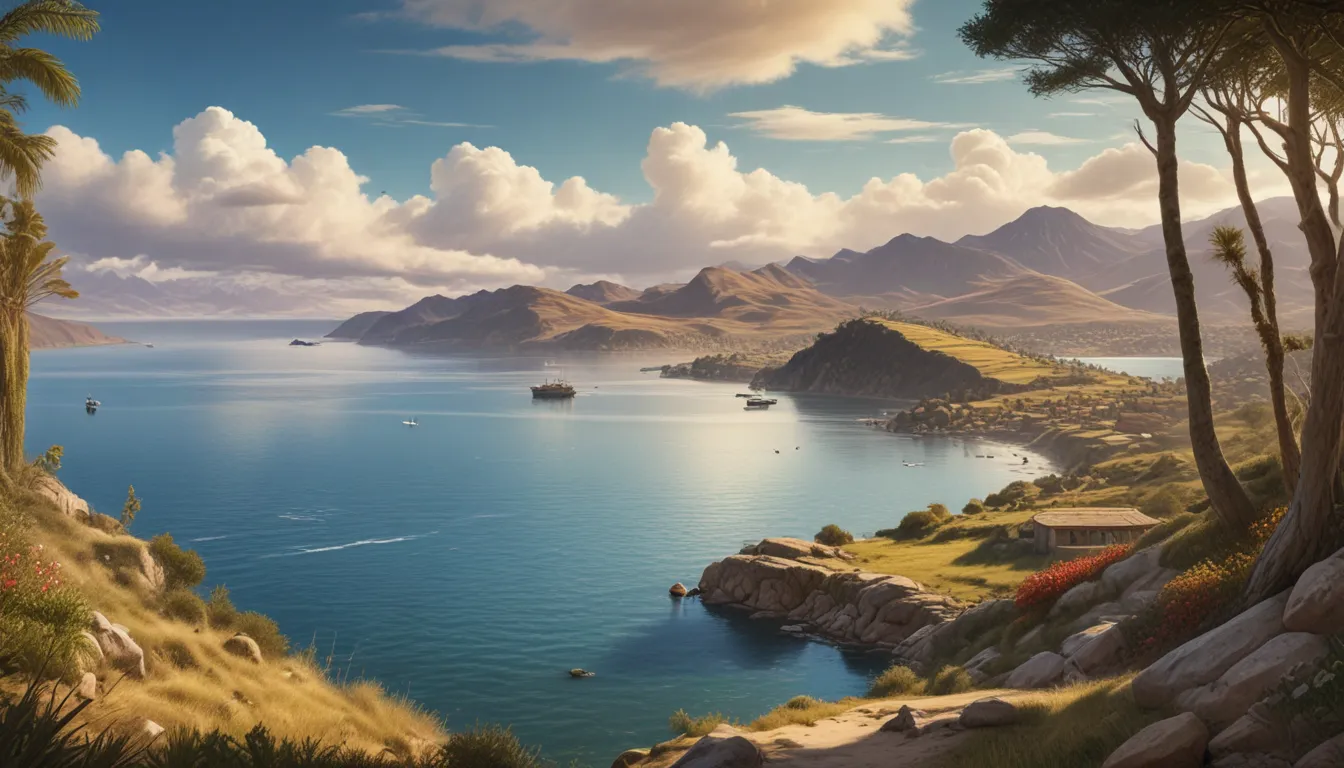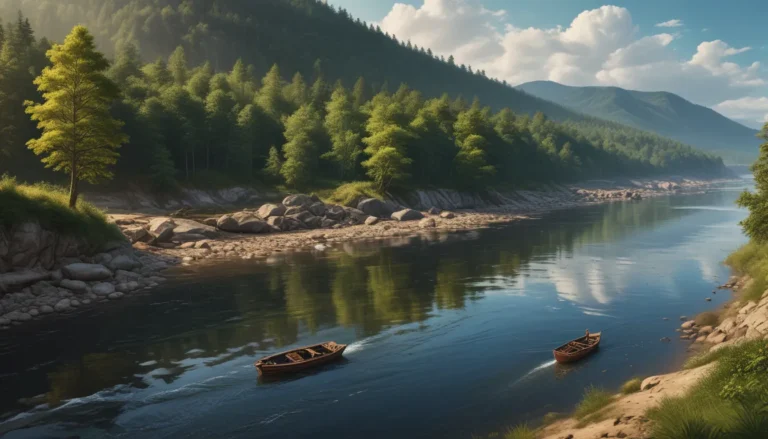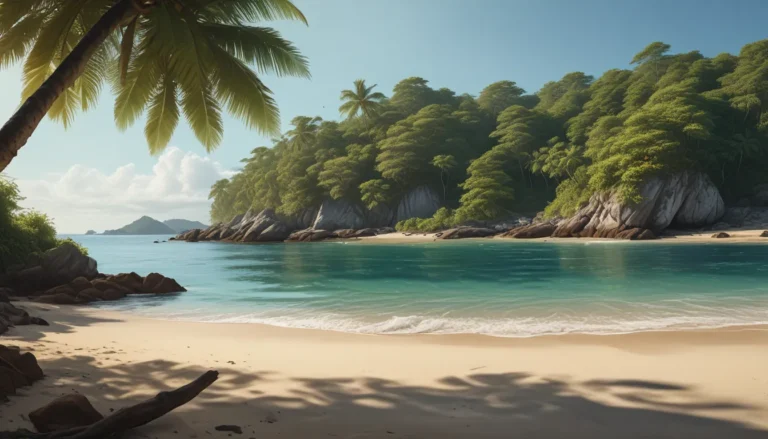The pictures we use in our articles might not show exactly what the words say. We choose these pictures to make you interested in reading more. The pictures work together with the words but don’t take their place. The words still tell you the important facts.
Nestled high in the Andes Mountains between Peru and Bolivia lies the awe-inspiring Lake Titicaca, a reservoir of beauty and ancient history waiting to be explored. Encompassing a rich cultural heritage and a diverse wildlife ecosystem, this extraordinary body of water has captured the hearts of travelers worldwide seeking a one-of-a-kind experience.
Discovering the Wonders of Lake Titicaca
Prepare to embark on a journey of discovery as we unravel 14 extraordinary facts about Lake Titicaca that will not only intrigue but also educate you on the wonders of this spectacular lake. From its legendary origin story to its vibrant communities, unique wildlife, and rich cultural significance, there is a wealth of knowledge to be gained from exploring the enchanting realm of Lake Titicaca.
Key Takeaways:
- Lake Titicaca stands as the highest navigable lake globally, shared by Peru and Bolivia, boasting a rich biodiversity and ancient traditions that make it a must-visit destination for nature lovers and history enthusiasts alike. - Delve into the birthplace of the Incas, witness the marvel of ancient floating islands, and immerse yourself in the sacred sites that have stood the test of time around Lake Titicaca.
The Marvel of Altitude: Lake Titicaca’s Elevation
Sitting majestically in the Andes Mountains at an elevation of 3,812 meters (12,507 feet), Lake Titicaca proudly holds the distinction of being the highest navigable lake in the world. Its lofty position adds to the allure and mystique of this natural wonder.
A Transboundary Gem: Lake Titicaca’s Shared Borders
Spanning the territories of both Peru and Bolivia, Lake Titicaca is a cross-border lake with its eastern part falling within Bolivia and its western part within Peru. This unique geographical feature adds to the charm and appeal of the lake as a shared treasure between two nations.
Diverse Wildlife Sanctuary: The Flora and Fauna of Lake Titicaca
The waters of Lake Titicaca teem with a diverse array of flora and fauna, including endemic species such as the Titicaca water frog and the Giant Titicaca water bug. These unique inhabitants contribute to the ecological richness of the lake, making it a sanctuary for wildlife enthusiasts.
A Tapestry of History: Lake Titicaca’s Connection to the Incas
Embark on a journey back in time to the legendary birthplace of the Inca civilization, where the first Inca king, Manco Capac, is said to have emerged from the depths of Lake Titicaca. This mythical origin story adds a layer of mystique to the historical significance of the lake.
Floating Marvels: The Intriguing Uros Floating Islands
Witness the ingenuity and creativity of the Uros people, an indigenous group residing on Lake Titicaca, as they craft floating islands made of totora reeds. These unique islands serve as homes to the Uros community and stand as a testament to human adaptability and resilience.
Textile Traditions: Taquile Island’s Artistic Legacy
Step onto the shores of Taquile Island, a cultural gem known for its traditional textile production. The skilled weavers of Taquile Island create intricate textiles that have been recognized as UNESCO Intangible Cultural Heritage, preserving ancient weaving techniques for generations to come.
The Puma’s Playground: Lake Titicaca’s Symbolic Shape
Known as "The Lake of the Puma," Lake Titicaca derives its name from its unique shape resembling a puma hunting its prey. This symbolic connection adds a touch of mysticism to the natural beauty of the lake's landscape.
Sacred Serenity: Lake Titicaca’s Spiritual Significance
For ancient Andean civilizations, Lake Titicaca held profound spiritual importance, playing a central role in their religious beliefs and rituals. The sacred waters of the lake served as a mirror of the cosmos, guiding the Incas in their agricultural and cultural practices.
Enigmatic Legends: The Mythical Sunken City of Wanaku
Dive into the realm of mythical tales surrounding Lake Titicaca, where legends speak of a sunken city known as Wanaku lying beneath the tranquil waters. These enigmatic stories add an air of mystique to the already captivating history of the lake.
Cultural Preservation: Upholding Ancient Traditions
Experience the cultural richness of the indigenous communities surrounding Lake Titicaca as they strive to preserve their ancient traditions, from unique music and dances to traditional agricultural techniques. Explore a world where heritage and history converge in a harmonious blend of past and present.
Nature’s Masterpiece: Lake Titicaca’s Pristine Beauty
Immerse yourself in the crystal-clear waters and breathtaking landscapes of Lake Titicaca, a true natural wonder that captivates visitors with its serene beauty and ecological richness. Discover a sanctuary where nature flourishes in all its glory, offering a glimpse into the wonders of the Andean region.
The Frog of Myth and Legend: Titicaca Water Frog’s Cultural Significance
Dive into the folklore and traditions of the indigenous communities surrounding Lake Titicaca, where the Titicaca water frog holds a revered place in mythology and cultural practices. Known locally as "k'ayra," this mystical creature embodies the spiritual connection between humans and nature in the Andean region.
A Haven for Explorers: Lake Titicaca’s Allure to Travelers
Every year, Lake Titicaca draws a multitude of visitors eager to explore its natural wonders, ancient ruins, and traditional communities. From scenic boat rides to cultural immersions, the lake offers a diverse range of activities for travelers seeking an unforgettable adventure in the heart of the Andes.
Conclusion
In conclusion, Lake Titicaca stands as a beacon of natural beauty, ancient history, and cultural heritage, inviting travelers to embark on a transformative journey of exploration and discovery. Whether you're drawn to the legends of the Incas, the allure of floating islands, or the tranquility of sacred waters, Lake Titicaca promises an experience like no other. Plan your visit to this extraordinary destination and prepare to be enchanted by its timeless wonders.
FAQs
Q: How did Lake Titicaca get its name?
A: Lake Titicaca derives its name from the Aymara and Quechua languages, where "Titi" means puma and "caca" means rock. Therefore, the name translates to "Rock Puma" or "Puma Rock," paying homage to the majestic landscape surrounding the lake.
Q: Is Lake Titicaca the highest navigable lake in the world?
A: Indeed, Lake Titicaca holds the esteemed title of being the highest navigable lake globally, situated at an elevation of approximately 3,812 meters (12,507 feet) above sea level. Its lofty position adds to the allure and mystique of this natural wonder.
Q: Can you swim in Lake Titicaca?
A: While swimming in Lake Titicaca is possible, the cold temperatures of the water due to the high altitude may require visitors to wear appropriate attire such as wetsuits or thick clothing for comfort and safety.
Q: What is the myth surrounding Lake Titicaca?
A: According to Inca mythology, Lake Titicaca is revered as the birthplace of the Inca civilization, with legends recounting the emergence of the first Inca king, Manco Capac, from the depths of the lake. The lake's mystical origin story adds to its cultural significance and historical allure.
Embark on a journey of discovery and wonder as you explore the extraordinary facts of Lake Titicaca, a destination brimming with history, folklore, and natural splendor. Let your spirit of adventure guide you to new horizons and enrich your understanding of the world's marvels. Dive into the depths of Lake Titicaca and emerge enlightened by its timeless treasures.






